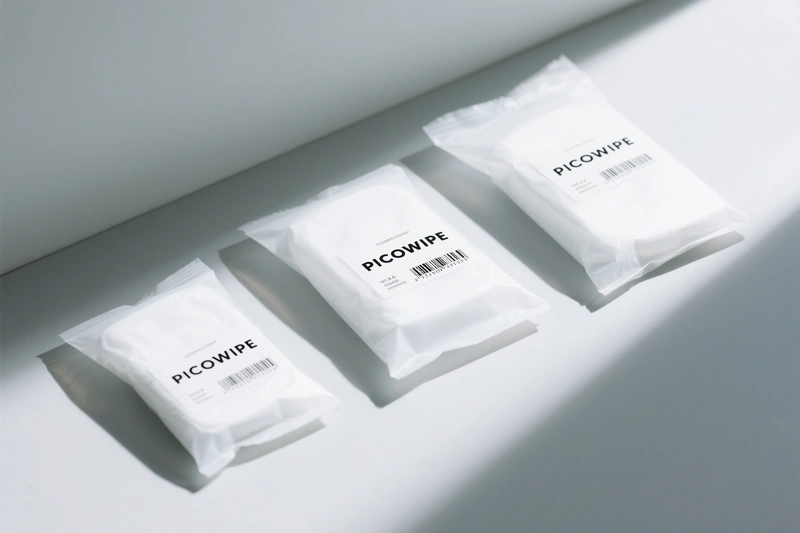By [email protected] — Charting the depths of expertise
Effects of Inconsistent Dimensions and Structure
This affects the usability and handling of the wipe. Inconsistent dimensions can lead to incompatibility with wiping tools or processes; inconsistent thickness affects the feel and control of applied pressure; inconsistent strength can cause the wipe to tear or shed fibers during use, introducing numerous particles; and inconsistent structure (e.g., porosity) impacts absorbency and particle entrapment capabilities. All of these can lead to inefficient cleaning and accidental contamination.
Causes of Inconsistent Dimensions and Structure
Inconsistencies in the physical dimensions and structure of cleanroom wipes (such as thickness, weave density, or strength) primarily stem from fluctuations and control differences throughout the entire manufacturing process, from raw materials to final cutting. These factors can cause the wipe to exhibit different physical properties in different areas or between batches:
Uniformity of Raw Materials (Fibers/Yarns): If the properties of the fibers or yarns used to make the fabric—such as thickness (denier), strength, or crimp—are not uniform, it will directly affect the structure and physical properties of the final fabric. Control of the Fabric Formation/Weaving Process: Tension Control: This is one of the most critical factors affecting fabric density, thickness, and strength. During weaving or knitting, if the tension of the warp and weft yarns (weaving) or loops (knitting) is unstable or uneven, it will cause variations in tightness, thickness, surface flatness, and structural strength (e.g., tensile and tear strength) across different areas of the fabric. For instance, excessive tension can make the fabric thinner, narrower, and potentially weaker. Feed Rate and Density Control: In nonwoven production, the uniformity of the fiber web (i.e., the amount of fiber per unit area, related to basis weight) directly determines the fabric's thickness and density. Uneven web laying will result in inconsistent thickness or basis weight. Machine Condition and Parameter Settings: Improper settings or wear on various parameters of looms, knitting machines, or nonwoven forming equipment (such as speed, temperature, pressure, needle/card gaps) will affect the uniformity and stability of the fabric structure. Effects of Finishing and Wet Processing: Shrinkage Rate During Washing and Drying: Fabrics typically shrink after wet processing (like washing). If the washing temperature, time, and mechanical action are inconsistent, or if the drying temperature and tension control are unstable, it will lead to different shrinkage rates in different areas or batches. This affects the final dimensions (length, width) as well as changes in thickness and density caused by shrinkage. Heat-setting (if required): Some synthetic fiber fabrics undergo heat-setting to stabilize their dimensions and structure. If the heat-setting temperature or time is not uniform, it will affect the dimensional stability and thickness of different parts of the fabric. Inconsistency in the Bonding/Web Consolidation Process (Mainly for nonwovens): For nonwovens consolidated through methods like thermal bonding, hydroentangling, or chemical bonding, uneven application of temperature, pressure, hydroentangling energy, or chemical agents will lead to differences in structural compactness, pore size, thickness, and strength in different areas of the fabric. Precision of the Slitting Process: While this doesn't affect the fabric's intrinsic structure, inconsistencies in the final product's dimensions (e.g., length, width) primarily occur at the slitting stage. If the slitting equipment lacks precision, blades are worn, or the fabric's positioning and tension are inaccurate during slitting, the dimensions of the cut wipes will deviate. Wear and Maintenance of Production Equipment: With long-term use, critical components of weaving, knitting, or finishing equipment (such as yarn guides, needles, blades, rollers) can wear down. This can gradually or locally affect the precision of fabric formation and processing, leading to inconsistencies in physical dimensions and structure.
Therefore, inconsistencies in the physical dimensions and structure of cleanroom wipes are a cumulative reflection of the precision and stability across multiple production stages, including raw material properties, fabric formation, finishing, and final slitting. Strict process parameter control, precise equipment maintenance, and online monitoring are crucial for ensuring the consistency of a wipe's physical properties.


